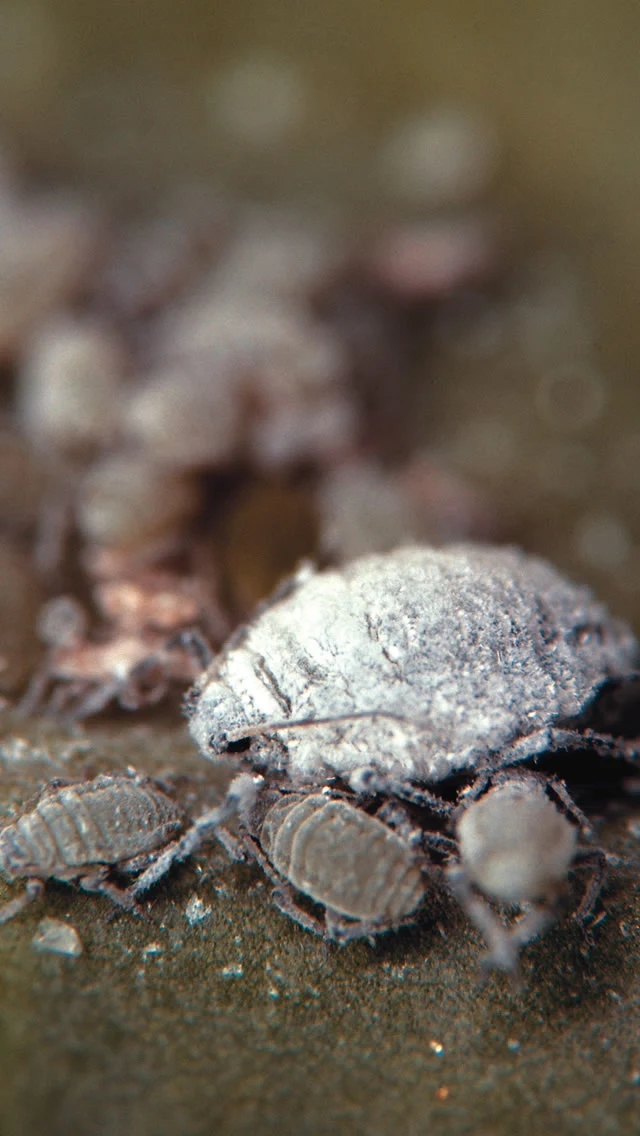
Mealy Cabbage Aphid
Brevicoryne brassicae
Identification
The adults are greyish/green, with a body covering of greyish white mealy wax. These aphids form large colonies on stems and flowering shoots of individual plants.
Symptoms
This aphid is a major pest of brassica crops and causes serious feeding damage leaving plants weakened and distorted.
Life-cycle
This aphid is restricted to members of the mustard oil containing herbaceous Brassicaceae (Cruciferae), throughout its life-cycle. The shiny black eggs are laid on the stems and leaves of cruciferous crops. These hatch in early spring producing young which feed on the leaves and shoots. Winged forms produced in May to June migrate to newly planted brassica crops, where numbers can increase rapidly.
In recent years, more of the population has overwintered as mobile stages rather than eggs.
Importance
This aphid is a major pest on broccoli, cabbage, cauliflower, kohl rabi, radish and swede. It causes serious feeding damage, leaving plants weakened and stunted. Heavily infested seedlings and young plants can wilt and die. Less serious distortion and fouling of leaf surfaces adversely affects marketability. This species can transmit around twenty plant viruses, of which cauliflower mosaic and turnip mosaic virus are most important.
Threshold
None established.

Mealy cabbage aphids feeding

Mealy cabbage aphid adult and larvae


